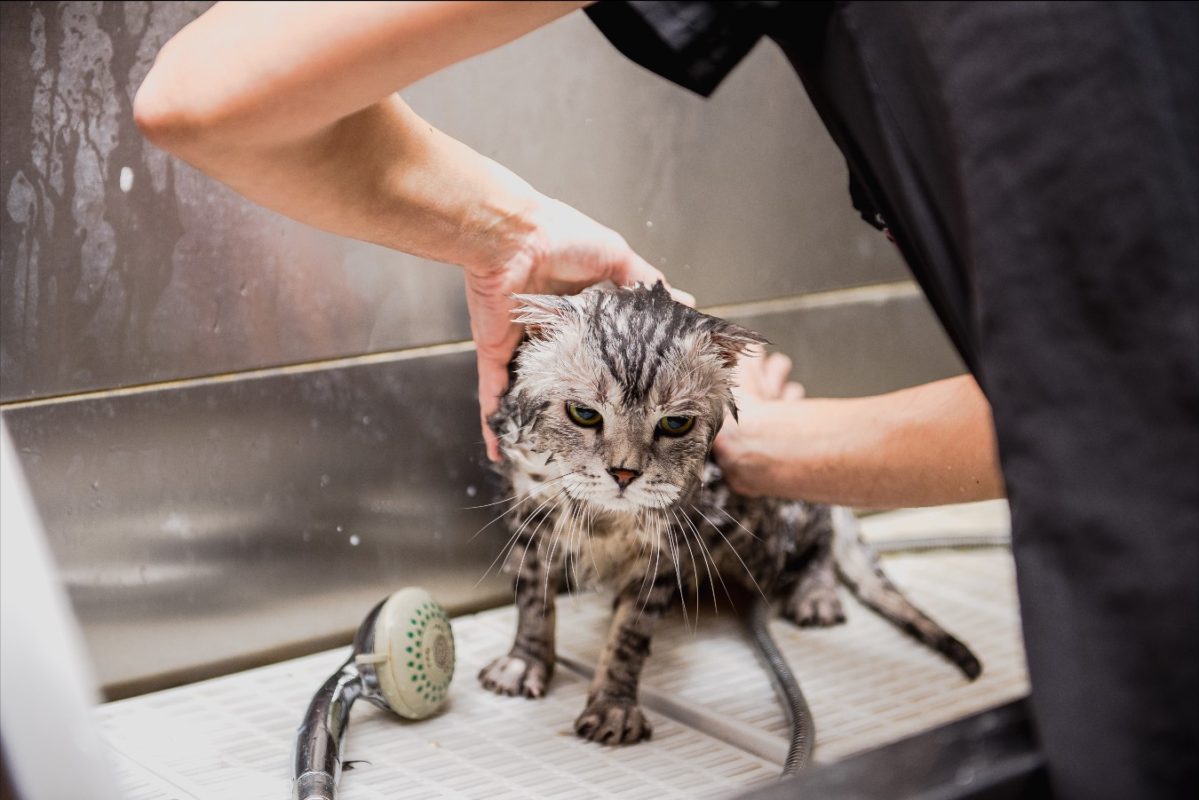Everything, Cats, Grooming, Pet Care
Grooming Your Cat – Tips and techniques
Your cat cleans herself every day. Tongue to fur, Fluffy grooms every part of her body. Do you need to groom your cat as well?
You might not need to groom her, but by grooming your cat, you can help maintain her health while bonding with her.
Health benefits of cat grooming
Cats shed. They shed more when they spend time indoors in dry, artificial heat. They shed in response to stress, such as when you’re away or they aren’t feeling well. They shed seasonally, especially in the spring.
Some of the hair that cats shed ends up on your carpet, on your clothing, and on other personal items. Some of it goes into cats’ stomachs when they groom themselves and comes out as hairballs — possibly on your carpet. Or it doesn’t come out at all if it becomes trapped in the cat’s intestinal tract.
The hair of long-haired cats becomes matted easily. The daily grooming that long-haired cats give themselves often can’t keep their coats from matting.
By grooming your cat, you move a lot of that shed hair onto your grooming comb or brush instead of it going everywhere else. Grooming reduces matting. In addition, when you groom your cat, you stimulate her blood circulation, and you’re better able to notice any physical changes in her.
While all cats can benefit from daily grooming, long-haired cats need grooming more often to keep their coats in good condition.
How to start grooming your cat
Ideally, cat grooming begins when your cat is a kitten. Grooming becomes part of her routine more easily at a younger age.
If your cat (at any age) isn’t comfortable with being groomed, don’t force the grooming sessions. Make grooming times very short at first, gradually lengthening them as your cat begins to enjoy being groomed. Groom one part of her body one day and another part the next day. You can also comb your cat’s coat for a few seconds at a time and then stop to scratch her in her favorite spots.
Cat grooming tools
What you need to groom your cat depends on your cat’s coat:
- A wide-toothed comb, especially for long-haired cats
- A fine-toothed comb
- A slicker brush for short-haired cats
Cat grooming
Begin by stroking your cat all over with your fingers. Stroke her on her head, down her neck and to her chest, and on her back, stomach, legs, and tail. Use this time to feel for any lumps or other changes while you help your cat relax. Also note the locations of any matted hair.
Use both hands to groom your cat. With one hand, hold the comb with the teeth at a right angle to the cat’s body. With the other hand, smooth the cat’s skin in front of the comb and feel for protruding bones to avoid. If you must pull a little where the comb meets resistance, hold the skin with the other hand to reduce the pulling sensation.
Start at the back of the neck and comb in the direction of hair growth. With long-haired cats in particular, use a wide-toothed comb for the first round. Begin by combing just the outer part of the hair, gradually combing deeper until you reach the cat’s skin. Use short, slow strokes.
Don’t comb your cat’s forehead or ears. To comb her neck and chest, tilt her head up slightly. Be careful around the bones in this area. Her legs will be easier to comb if you lift her so that the leg you’re combing is hanging down when you comb it.
When you come to matted hair, comb a layer at a time to remove the hair gradually. Try working through it a bit at a time over several days if necessary to reduce your cat’s discomfort. Cutting matted hair out with scissors can be dangerous because of the risk of cutting the cat’s skin. If you cut off just the top of the matted section, you’ll be able to work through the rest of it more easily with your fingers and a comb.
When a cat’s hair is extremely matted, it may be necessary to have a veterinarian shave off the matted sections.
If your cat lets you know at any time that she’s uncomfortable, stop. You need to find out what’s causing her discomfort, and she needs to know that she’s in control for the grooming sessions to go smoothly.
Nail clipping
Pet stores carry special clippers for clipping cats’ nails.
Cats that spend a lot of time outdoors or use a scratching post often don’t need to have their nails clipped. Or their front nails might not need clipping, but their back nails might. Your cat’s needs may change over time too as her habits change.
Your cat will probably be nervous at first when you’re clipping her nails. Let her examine the clipper so that she isn’t alarmed just by the sight of it. Hold her in a comfortable position, and clip the nails on only one paw per clipping session if necessary. Give her lots of attention before and afterwards.
Clipping your cat’s nails won’t hurt her as long as you don’t clip the vein inside the nails. Cats’ nails are clear, so you can see their veins in the nails. In case you accidentally clip the veins, have cauterizing powder on hand, which you can apply to stop the bleeding.
As with grooming the cat’s coat, if nail clipping is done regularly and carefully, your cat will adjust to the routine.


